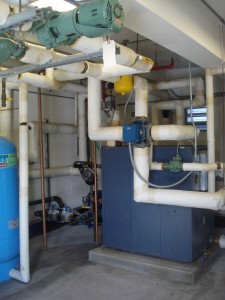In this series of articles, GCC interviews leading pioneers of the green community. New Yorker Henry Gifford is an engineer and building science authority. Over the last few years, Gifford discovered information that led him to file a lawsuit against the USGBC and LEED In October 2010. The lawsuit has caused controversy within the green building community.
Henry Gifford is quick to notice energy waste, pointing out lights left on during the day, patches of melted snow on rooftops where heat is escaping, AC units, things many of us take for granted, if we notice them at all. Preventing energy waste has been Gifford’s job for more than two decades and his efforts have brought him up against one of the most well-known names in the green movement: LEED.

LEED (Leadership in Energy and Environmental Design) is an organization that rates buildings depending on how environmentally friendly they are. LEED takes a myriad of factors into account such as construction site, building materials, waste and water treatment, and energy use. The certification process is a checklist where buildings earn points based on which environmental standards they meet. More and more people are relying on LEED to set building standards and on LEED certification to earn respect and publicity for their buildings. As far as energy use goes, buildings can earn points by predicting how their energy use will be lower than a “baseline building”. The more you reduce your energy use, the more points you get.
However, according to Gifford, the rating system is based solely on projections and computer models. The “baseline building” energy use is predicted by a computer model of a normal building of the type that is being built (i.e. office building, school etc) Then, the LEED expert programs the proposed energy saving modifications into the model. If the model shows reduced energy use, the building earns points.
So what is the problem? Two things, says Gifford. First, too many factors (open windows, turning up the heat etc) can affect a building’s energy use, making it impossible to accurately predict. Second, the system is based entirely on these incomplete predictions, not the actual energy use once the building is built. According to Gifford, the actual energy use is not even measured in most buildings.
A while ago, LEED did do a study comparing their buildings’ energy use to non-LEED buildings. The numbers speak for themselves, and using LEED’s own data, Gifford found that LEED buildings use an average of 29% more energy than non-LEED buildings.

How does this happen? The problem, says Gifford, is a combination of factors. First, developers focus on big, flashy systems that prove to be ineffective. Things like solar panels installed on the wrong sides of buildings, and things like the HVAC heating/cooling system, which Gifford claims to be unnecessarily complicated and inefficient. Everyone is focused on bigger equipment, when really, says Gifford, they should be focusing on using smaller, more efficient mechanical systems. Less machinery means less energy which means less waste.
Second, the buildings are not actually held accountable to their energy use. There is no limit to the energy a building can use, nor do they have to undergo continual evaluation to make sure they are meeting LEED standards. Gifford describes LEED as a large sports stadium, crowded with fans expecting great plays, but there is no one on the field, and no scoreboard. LEED is more concerned with the appearance of being green, than actually reducing energy consumption.
Last year Gifford filed a lawsuit against the USGBC (US Green Building Council), the organization behind LEED, for fraud. Besides trying to get LEED to change its practices, Gifford wants people to realize it is alright to speak up when something is not right. We do not have to accept suboptimal methods because that is the best we have, and we do not have to nor should we accept inefficient green technology simply because it is labelled as “green”.
It is all too easy to be “green-washed” with the promise of the next sustainable product. However, we cannot let appearances get in the way of us finding out the facts, and using our knowledge to make informed choices for positive change.
By: Bekah Holloway


